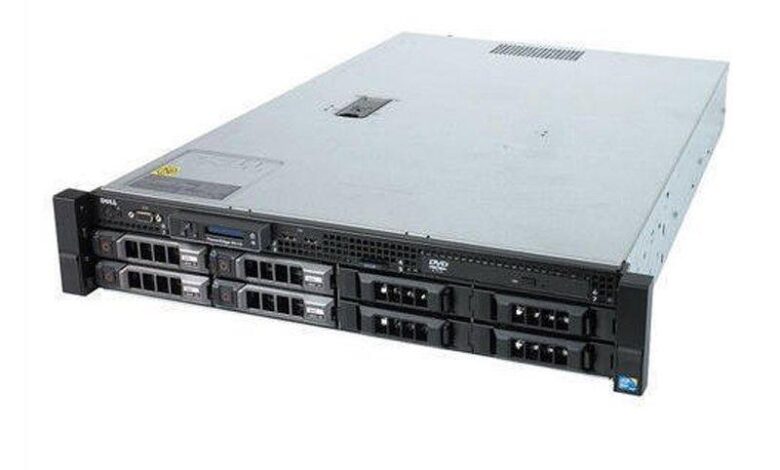PowerEdge Rack Servers Types and Advantage

What is a Rack server?
A Rack server is a type of server that is designed to be mounted in a server rack, which is a metal frame used for storing and organizing servers and other networking equipment. Rack servers are typically smaller and more compact than traditional tower servers, allowing for more efficient use of space within a data center.
Rack servers are typically designed with a modular architecture, allowing for easy customization and upgradeability. They are also designed to provide high levels of reliability and uptime, with features such as redundant power supplies, hot-swappable components, and advanced cooling systems.
Rack servers are commonly used in data centers and other large-scale computing environments, where multiple servers are required to support complex applications and workloads. They are often used in conjunction with virtualization software, which allows multiple virtual servers to run on a single physical server, further optimizing space and resources.
What is the rack server used for?
Rack servers are used for a wide range of purposes, but they are primarily used for hosting and delivering web applications and services, as well as supporting other data center operations. Here are some of the most common uses of rack servers:
Web hosting:
Rack servers are often used to host websites, blogs, and other online content. Multiple servers can be clustered together to support high-traffic websites and applications.
Database management:
Rack servers can be used to manage large databases and provide fast, reliable access to data.
Application hosting:
Rack servers can be used to host and run applications, such as enterprise resource planning (ERP) software, customer relationship management (CRM) systems, and other business-critical applications.
Virtualization:
Rack servers can be used as the physical hosts for virtual machines, which can be used to run multiple operating systems and applications on a single physical server.
Cloud computing:
Rack servers are a key component of cloud computing infrastructure, providing the processing and storage resources that power cloud-based services and applications.
Overall, rack servers are a versatile and essential component of modern computing infrastructure, used to support a wide range of applications and services in data centers and other large-scale computing environments.
What is the advantage of a rack server?
There are several advantages to using rack servers in a data center or other computing environment.
Space-saving:
Rack servers are designed to be mounted in a server rack, which allows for more efficient use of space in a data center. Multiple servers can be stacked on top of each other, which reduces the overall footprint of the server hardware.
Scalability:
Rack servers are designed with a modular architecture, which makes it easy to add or remove components as needed. This allows for easy scalability, as businesses can add more servers or upgrade existing ones to meet changing needs.
Redundancy:
Many rack servers are designed with redundant power supplies, fans, and other components, which helps ensure high levels of uptime and reliability. If one component fails, another can take over without causing downtime or disruption.
Cooling efficiency:
Rack servers are designed with advanced cooling systems, which help prevent overheating and prolong the lifespan of the hardware. In addition, the use of hot aisle/cold aisle configurations can improve cooling efficiency, reducing energy costs and prolonging the life of the equipment.
Manageability:
Rack servers are designed to be easily managed and monitored. With remote management capabilities and centralized administration tools. This makes it easier for IT teams to monitor and manage the hardware. Reducing the risk of downtime and other issues.
Overall, the use of rack servers can help businesses save space, improve scalability. Ensure high levels of uptime and reliability, making them an essential component of modern computing infrastructure.
How many types of server racks are there?
There are several types of server racks available, each with its own set of features and advantages. Here are some of the most common types of server racks:
2-Post Racks:
These are open-frame racks that have two vertical posts. Are commonly used for mounting lightweight networking equipment, such as switches and routers.
4-Post Racks:
These are the most common type of server rack. Featuring four vertical posts and a sturdy frame that can support heavier equipment, such as servers and storage arrays.
Enclosed Racks:
These are server racks with fully enclosed sides and doors that provide additional security . Protection for the equipment inside. They also often feature cable management and ventilation systems for improved airflow and organization.
Wall-Mount Racks:
These are smaller racks that are designed to be mounted directly onto a wall. Making them ideal for smaller networking equipment or installations in tight spaces.
Blade Server Enclosures:
These are specialized racks designed specifically for blade servers, which are high-density computing systems that can pack dozens or even hundreds of servers into a single enclosure.
Open Compute Racks:
These are racks designed for use with Open Compute Project (OCP) hardware, which is a set of open-source server hardware designs that are optimized for efficiency and scalability.
Overall, the type of server rack that’s best for a particular application will depend on factors such as the size and weight of the equipment, the available space and power requirements, and the desired level of security and accessibility.
How many servers can a rack hold?
The number of servers that a rack can hold depends on several factors, including the size of the servers, the configuration of the rack, and the power and cooling capacity of the data center. Here are some general guidelines for estimating the number of servers that a standard 42U server rack can hold:
1U servers:
A standard 1U server is approximately 1.75 inches (44.45mm) in height. A 42U rack can therefore hold up to 42 1U servers.
2U servers:
A 2U server is approximately 3.5 inches (88.9mm) in height. A 42U rack can hold up to 21 2U servers.
Blade servers:
Blade servers are designed to be housed in specialized blade enclosures. Which can hold multiple servers in a compact form factor. A typical blade enclosure can hold anywhere from 8 to 16 blade servers. Depending on the configuration.
Other factors:
In addition to the size and number of servers. Other factors such as power and cooling requirements can also impact the number of servers that can be housed in a rack. For example, if a server requires a large amount of power or generates a lot of heat. It may require additional space or cooling infrastructure.
Overall, the number of servers that can be housed in a rack will depend on a variety of factors and will vary depending on the specific needs and requirements of the data center or computing environment.
Conclusion
In conclusion, rack servers are a type of computer server designed to be mounted in a server rack.Which allows for efficient use of space in a data center or other computing environment. There are several types of server racks available, each with its own set of features and advantages. Including 2-post racks, 4-post racks, enclosed racks, wall-mount racks, blade server enclosures, and open compute racks. The number of servers that a rack can hold will depend on a variety of factors. Including the size and configuration of the servers. The power and cooling requirements of the data center, and other factors. Overall, rack servers are an essential component of modern computing infrastructure. Offering scalability, redundancy, cooling efficiency, manageability, and other benefits.





